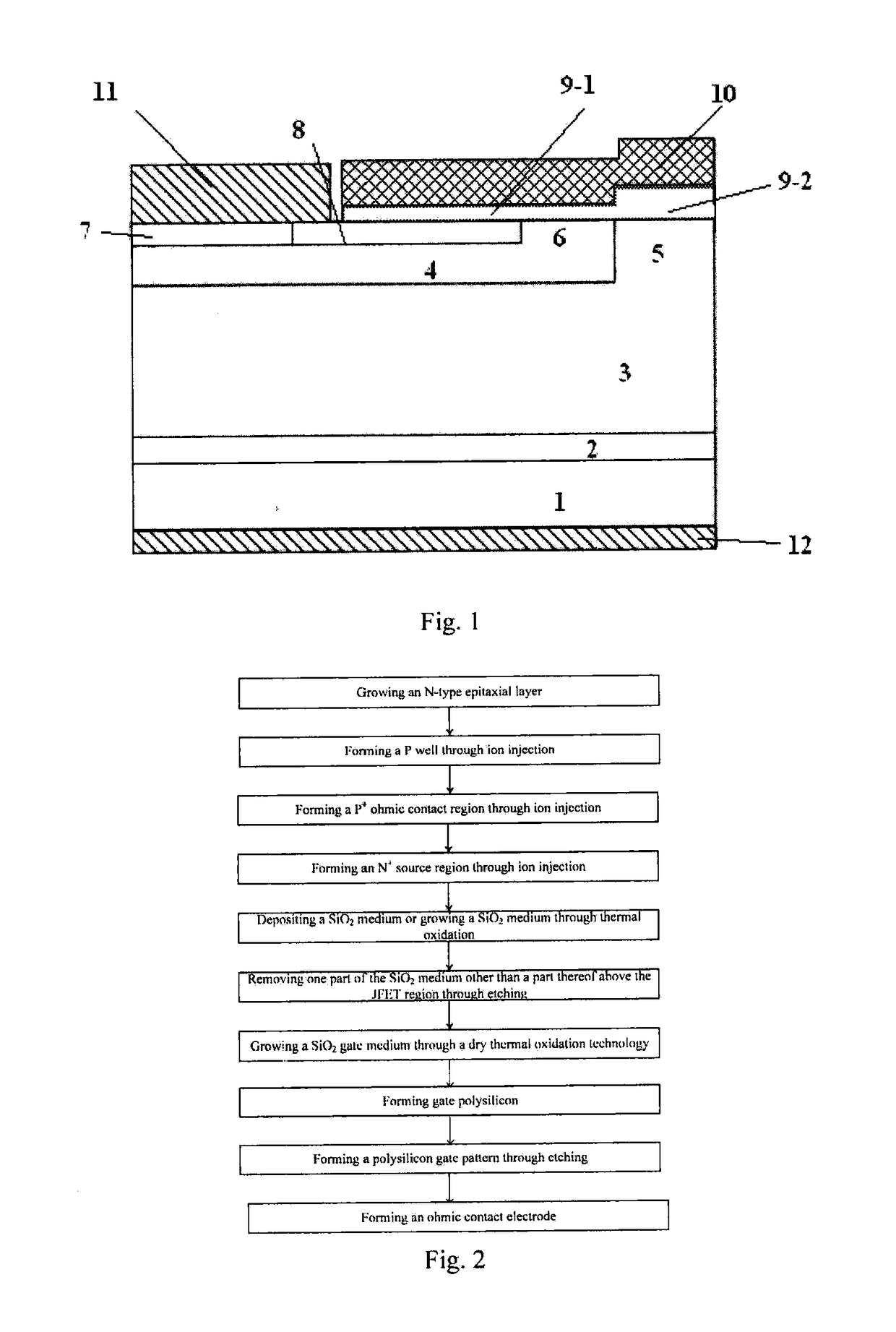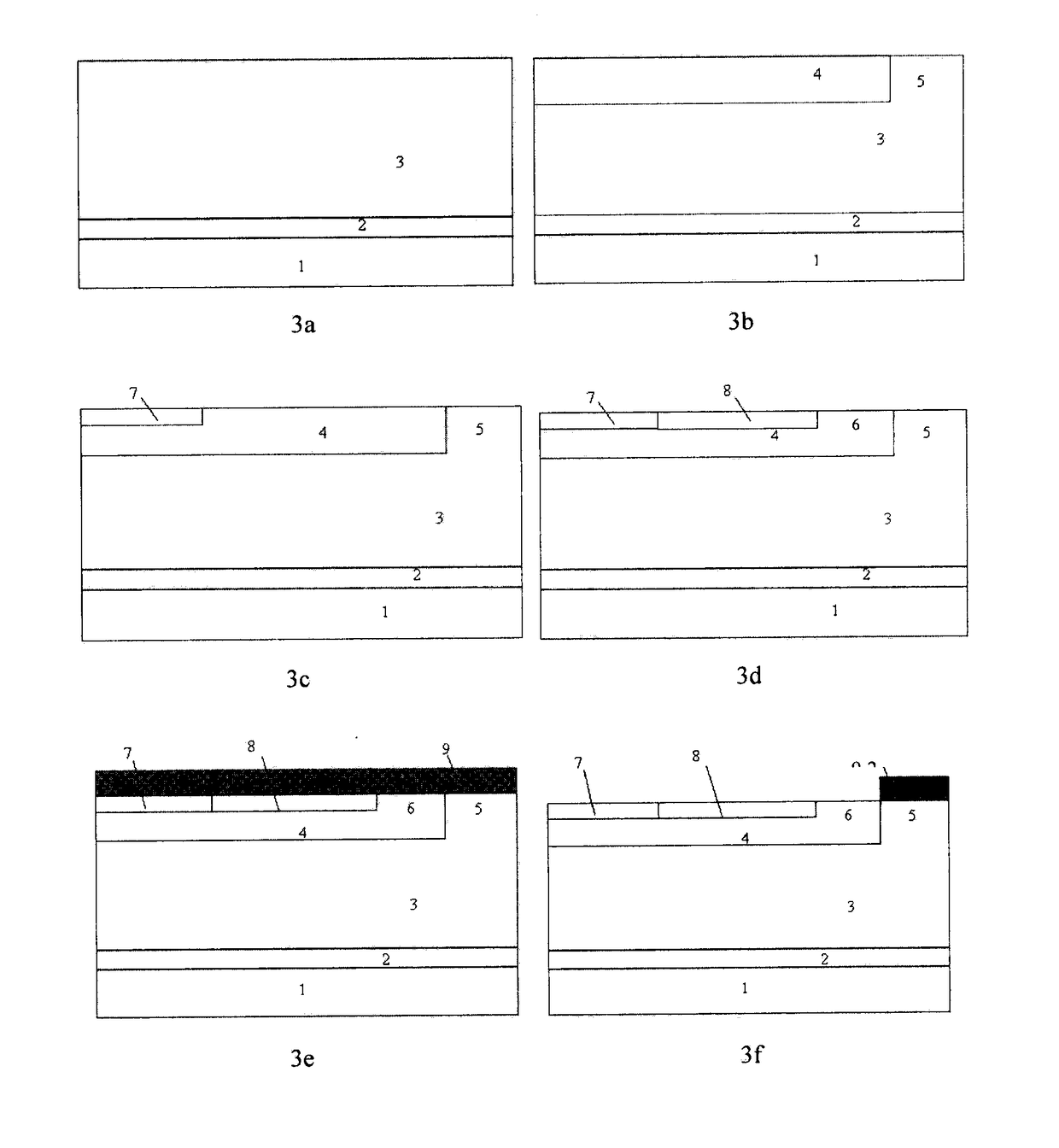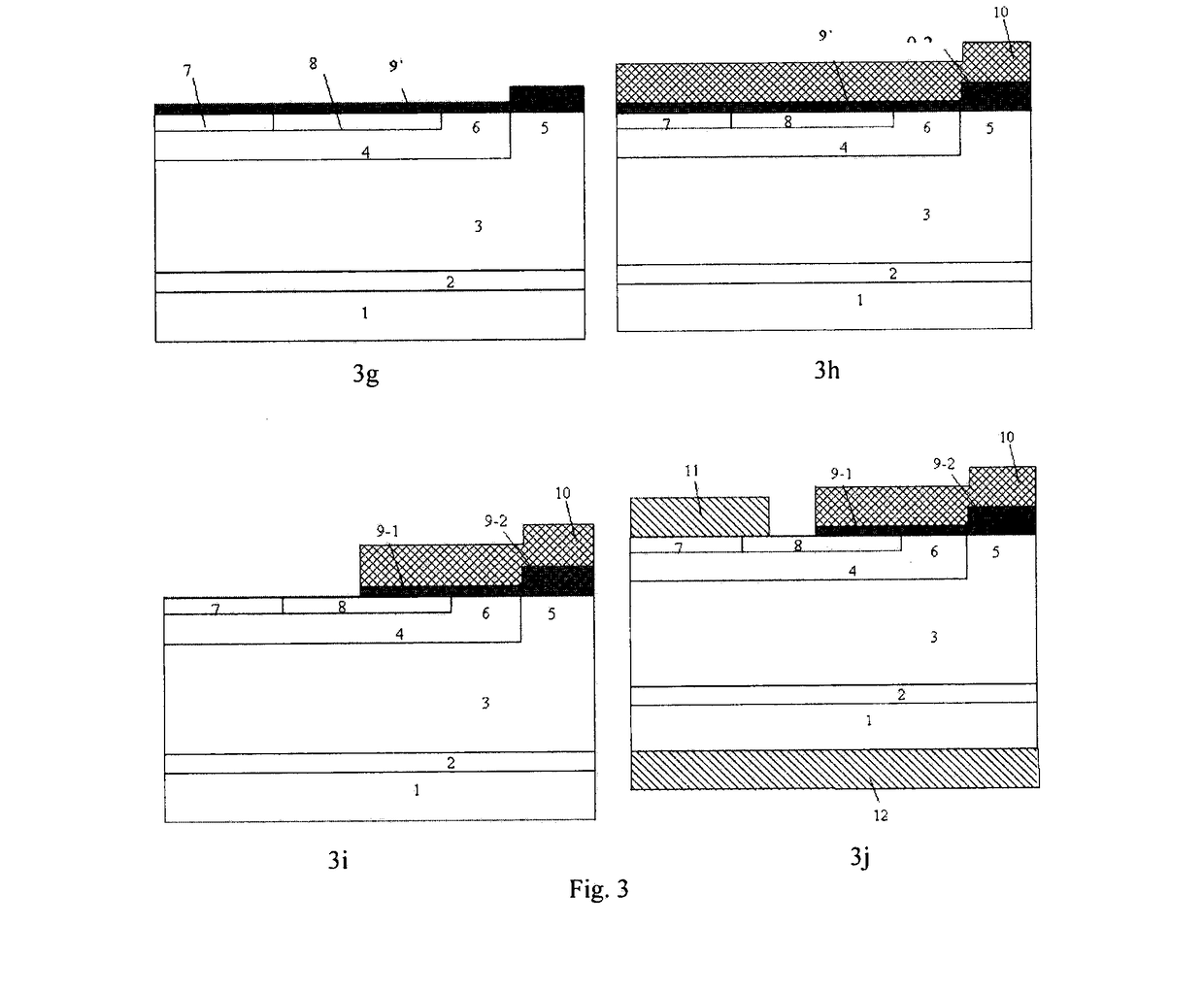Silicon carbide mosfet device and method for manufacturing the same
a silicon carbide mosfet and mosfet technology, applied in the field of silicon carbide mosfet devices, can solve the problems of serious affecting the reliability of the gate oxide layer, significant electric field curvature, and the device can reach 2 mv/cm to 3 mv, so as to improve voltage resistance ability, gate oxide layer reliability, and effective reduction of electric field strength.
- Summary
- Abstract
- Description
- Claims
- Application Information
AI Technical Summary
Benefits of technology
Problems solved by technology
Method used
Image
Examples
embodiment 1
[0129]A silicon carbide MOSFET device a is manufactured through the aforesaid method, and a voltage-resistance level of the device is 1200 V. The parameters of each of the parts of the device are as follows: the thickness of the N-type buffer layer that is formed on the silicon carbide substrate is 1 μm; the thickness of the N-type epitaxial layer is 12 μm, and the N ion doping concentration thereof is 8.5×105 cm−3; the junction depth of the P well is 0.9 μm, and the Al ion doping concentration thereof is 1×1018 cm−3; the junction depth of the P+ doped region is 0.3 μm, and the Al ion doping concentration thereof is 1×1019 cm−3; the junction depth of the N+ source region is 0.3 μm, and the N ion doping concentration thereof is 1×1019 cm−3; the width of the JFET region is 3 μm; the width of the channel is 1 μm; the width of the second gate oxide layer, and the width of the first gate oxide layer are respectively 3 μm and 10 μm, and the thicknesses thereof are respectively 120 nm and ...
embodiment 2
[0131]A silicon carbide MOSFET device b is manufactured through a similar method, and a voltage-resistance level of the device is 1200 V. Device b differs from device a in that: the width of the JFET region is 5 μm; and the width of the second gate oxide layer, and the width of the first gate oxide layer are respectively 5 μm and 10 μm, and the thicknesses thereof are respectively 120 nm and 60 nm.
[0132]Similar to embodiment 1, an electrical property simulation is performed on device b, and it can be obtained that, when the device b works at a blocking voltage 1200 V, a peak electric field strength of the gate oxide layer above the JFET region is 1.5 MV / cm, and electric field concentration phenomenon can be effectively inhibited. When the device works in an on-state, an on-resistance thereof is 5.3 mΩ·cm2 under a 1.6 V positive voltage drop. The on-resistance of device b is lower than that of device a.
embodiment 3
[0133]A silicon carbide MOSFET device c is manufactured through a similar method, and a voltage-resistance level of the device is 1200 V. The parameters of each of the parts of the device are as follows: the thickness of the N-type buffer layer that is formed on the silicon carbide substrate is 1 μm; the thickness of the N-type epitaxial layer is 10 μm, and the N ion doping concentration thereof is 6×1015 cm−3; the junction depth of the P well is 0.9 μm, and the Al ion doping concentration thereof is 1×1018 cm−3; the junction depth of the P+ doped region is 0.3 μm, and the Al ion doping concentration thereof is 1×1019 cm−3; the junction depth of the N+ source region is 0.3 μm, and the N ion doping concentration thereof is 1×1019 cm−3; the width of the JFET region is 3 μm; the width of the channel is 1 μm; the width of the second gate oxide layer, and the width of the first gate oxide layer are respectively 2 μm and 10 μm, and the thicknesses thereof are respectively 150 nm and 50 nm...
PUM
 Login to View More
Login to View More Abstract
Description
Claims
Application Information
 Login to View More
Login to View More - R&D
- Intellectual Property
- Life Sciences
- Materials
- Tech Scout
- Unparalleled Data Quality
- Higher Quality Content
- 60% Fewer Hallucinations
Browse by: Latest US Patents, China's latest patents, Technical Efficacy Thesaurus, Application Domain, Technology Topic, Popular Technical Reports.
© 2025 PatSnap. All rights reserved.Legal|Privacy policy|Modern Slavery Act Transparency Statement|Sitemap|About US| Contact US: help@patsnap.com



